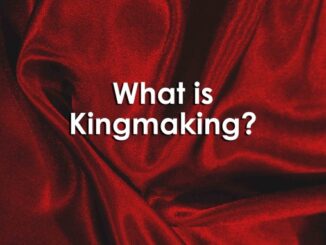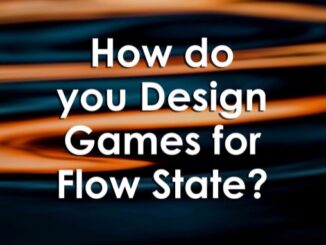
In the Arab world, Thursdays mark the start of the weekend before we reset again on Sunday Morning unlike the rest of the world who usually reset on Monday.
What does that mean?
It means that my 12-year-old self can stay up late on Thursday with my cousins to play boardgames (specifically Risk, Diplomacy, Timbuktu & Monopoly) – games that can last for 6 hours straight with an endless line up of sandwiches, snacks, and fizzy drinks. Time passes by as if there is no end to it – a peculiar behavior for a kid with ADHD that had extreme focus issues in the classroom and in finishing homework.
My only analysis is that I was an addict to the scheme. Yes, an addict. I was addicted to the “incentive scheme”.
Let’s take the boardgame (Risk) as an example:
The objective is very straightforward: to conquer the world by controlling all the countries on the board. You do this by attacking other players and taking over new territories on the board. All the while, you need to make sure that your own territories are well-defended.
The more countries you conquer, the more armies you acquire and the further you can expand territories across the board.
My kick was in building bigger armies, increasing my chances of winning and possibilities of strategizing against my older cousins. It was an absolute thrill to earn, earn & earn.
Do you know why?
Because human beings are very susceptible.

During boardgames & video games, we can be easily influenced by rewards. We notice the hint of a stimulus in the game environment, we perform an action based on that stimulus, and then a reward is earned.
And obviously when we get a reward, we are on the lookout for that same stimulus (or another) in the future. That’s basic psychology 101 classical conditioning where behaviors are increased by rewarding them and decreased by punishing them.
Going deeper, most games (if not all games) work by triggering the Autonomic Nervous System (ANS). The system that controls our cells in the background automatically, typically without conscious thought. Simultaneously, any thought can trigger the ANS without us even being aware of it.
The ANS is composed of two competing systems called the Sympathetic Nervous System (SNS) and the Parasympathetic Nervous System (PNS). Competition here means that when one system is stimulated, the other system is suppressed. Normal natural humans have these systems in balance automatically thanks to evolutionary processes.
The SNS is often called the “Fight or Flight” system. Activation of this system causes increased alertness, strength, and mobility at the cost of tunnel vision and impaired ability to think beyond the present. When the PNS is most dominant (usually during periods of rest, or just after eating) the body takes available nutrients (from whatever you ate recently, if available) and rebuilds damaged tissues, grows new hair/nails/skin, and stores leftover nutrients as fat. Appetite is increased by PNS activation.
Insulin, dopamine, and oxytocin are primary PNS chemicals and SNS counter-chemicals. They affect your interactions in social situations and even affects your decision making in a multitude of situations.
Meaning, that during incentivized game environments seeing a loot box/possibility of winning/conquest can cause us to release dopamine even before opening the box or winning the game. Tasting a strong sweetener, even if it has no calories or we don’t swallow it, triggers a strong insulin response. Seeing a tiger, gun, or any other threat can trigger the SNS without us actually being harmed. Our body in most cases can react to a stimulus without us even having the stimulus. In other words, if we can imagine it, then it is real.
When you think about it, our brains are several pounds of meat floating in cerebrospinal fluid. It’s dark in there. There’s no sound, feel, smell, or any other form of stimulation other than nerve impulses. We have no ability to directly see “reality” during games. All those nerve impulses are processed through the filter of our ideology, beliefs, previous experiences, competing nerve impulses, and world view. This means I can let ten individuals engage with the same game and have them tell me ten different stories about what is going on. Putting it a different way, reality is extremely personal, or perhaps does not exist at all.
Games (our eternal metaverse) are the reality of its players. They are the reality of anyone who goes through them, and this includes any game in which you can get hooked on incentives & rewards. Any game that offers us satisfying feedback pushes our curiosity forward…hooks & anchors us. It’s a scientific fact.

Game designers that create learning games are well-aware of those parameters and work on utilizing game mechanics that allow for such behavioral dynamics to flow continuously. The main purpose is for the learners to reach the final mile of learning a specific knowledge context or practicing a certain skill and behavior of a technique/model.
Let’s list some of those mechanics that come into play:
- Fixed Rewards Mechanic:
As predictable as harvest is, fixed rewards should be what everyone gets after acquiring a specified prerequisite. The reward is the same for all players, but a separate scoring mechanic is required to differentiate between their standings and statuses in the game. Usually, fixed rewards are utilized to enforce a precise behavior that you want the learners to practice or a piece of knowledge that must be non-refutable to them by the end of the game. - Random Rewards Mechanic:
A four-leaf clover is a sign of good luck, once we find it, we are destined for fortune. Random rewards produce a persistent behavior of exploration & surprises in a designed structure because they can be competitive or non-competitive, and certainty or uncertainty based. It’s interesting to find out. Believe it or not, randomized rewards are particularly enticing because it ties into the survivalist mentality of our ancient ancestors. Jamie Madigan, operator of the Psychology of Games website, uses the example of a primitive “adaptive feature”. As our predecessors continued to search for food in certain bushes, even though other similar bushes didn’t reap the same reward. This means that the reward schedule becomes unexpected: we lose more often than we win, and we never know when the next triumph will come. Rather than discouraging us from playing, this actually makes the game even more enticing than if we won easily.
This strategy is known as a variable ratio schedule of reinforcement and is the same tactic used in slot machines; you can never predict when you’re going to win, but you win just often enough to keep you coming back for more.
It’s completely random (in games), but we are not really built to deal with randomness in that way, so we’re still inherently fixated on getting that reward. Every time we see something that we think might help us get that reward, we’re all the more interested. It’s a super-charged feedback loop.
- Lottery/Chance Mechanic:
People love winning & better if their prize is double or more than the effort put; learning game designers use this mechanic to induce a sense of devotion to the design by placing those rare chances. - Virtual Goods Mechanic:
They allow us to spend our virtual currency on actions & factions in the game designed in order for us to level up, earn specific tools or even utilize a distinct game strategy. It’s a force to be reckoned with. Collecting goods, resources, etc and trade using virtual or/and actual currency in your design increases the learners’ belonging & cooperation or/and competition. It also fuels the illusion of control by the player (learner) that they can actually affect the actions of the game using trade/wit/scheme to win the game over the other opponent or even over a computer, if it’s a video game. Learning game designers capitalize on using this mechanic to invoke the feelings of possession & ownership. This could be used in game-based learning to teach learners about project management, change management, adaptability, or any other type of strategy you are planning on educating them about. - Investment Mechanic:
It’s only natural that we mention this mechanic now, as people value outcomes when they sacrifice effort, time, or even emotions. This mechanic is utilized to let learners appreciate & cultivate an intended behavior in your design or to educate them about persisting through an intended plan or even through practicing a daunting skill. - Social Status Mechanic:
We can’t really be talking about dopamine rushes without mentioning the most social mechanic of them all, the one that fuels greater visibility for people, creating opportunities to create new relationships. It also feels good (like physically good) & produces a high sense of achievement. This mechanic is used in concordance with other mechanics such as PBL & victory condition mechanics.

It’s easy to consider games to be something frivolous, although from what has been mentioned so far we can agree that rigorous economical concepts such as loss aversion, sunk-cost/gain and resource scarcity are evident in most of the mechanics we have mentioned. Game-design bridges between the understanding of psychology, economics & behavioral sciences using game mechanics and clear design purpose.
When I was 12-years of age, I knew nothing about all of this, but I knew the meaning of losing an opportunity. I knew the meaning of sorting my resources and considering correct decisions. I learned much about long-term planning and enjoying a good competition.
Games taught me about economy when I was too young to even understand what I wanted to be when I grew up to be 35.
- A Quintessential Scheme for Engagement - 16th November 2021
- The Treasure of Atlantis – Story as Game Mechanic - 16th July 2020





Be the first to comment